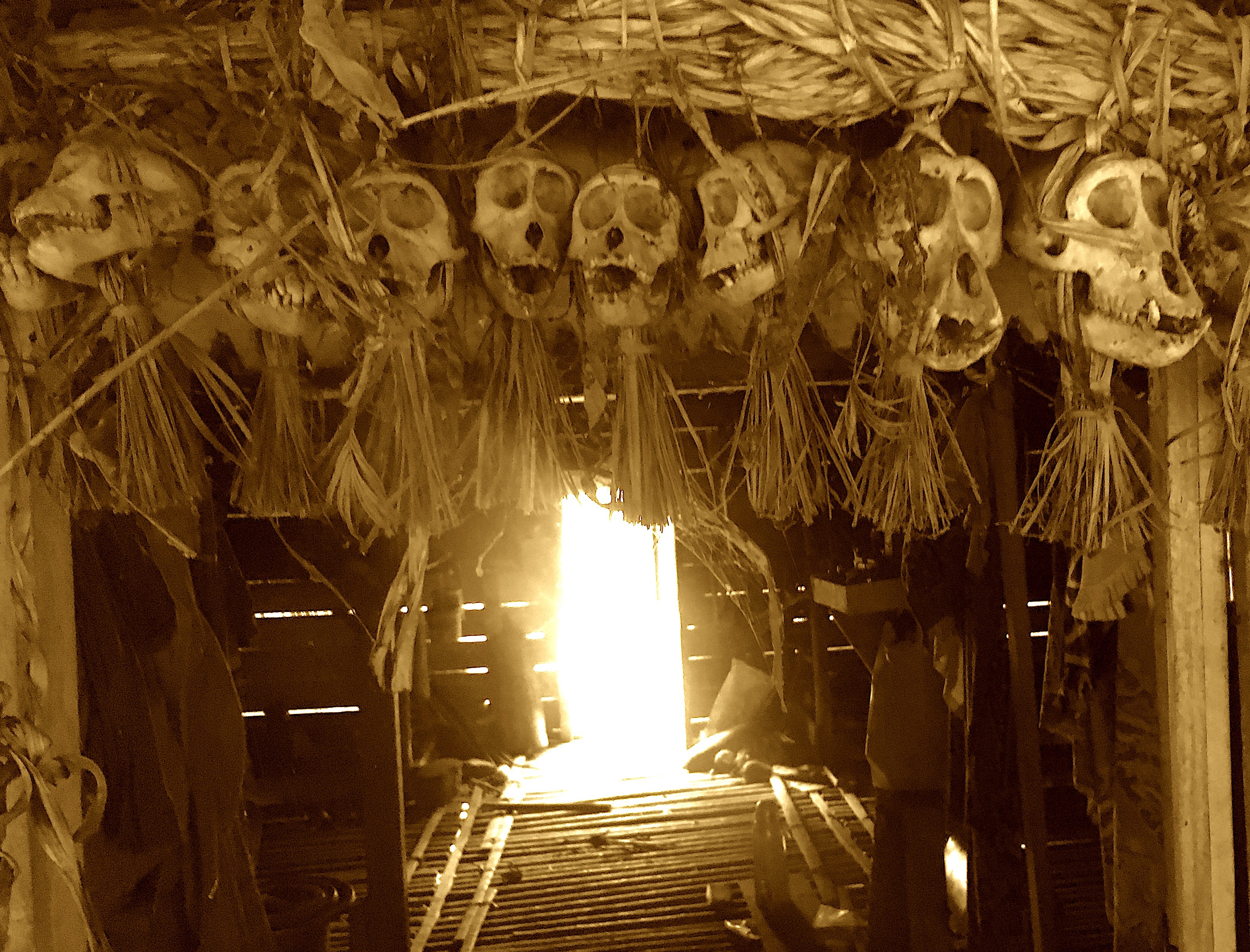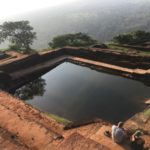One of the more startling features of Mentawai houses are the animal skulls that hang over the lintel of each family home. Some of these bones once belonged to wild pigs, others to flying foxes. Most unnerving to behold are the bones of “simpai,” the black-and-yellow primate endemic to the islands, which yield faintly human-like skulls.
About a century ago, during a more sensationalistic era of travel-writing, these skull-garlands would likely have been the source of fevered – and faintly condescending – speculation about the antique superstitions and idiosyncrasies jungle culture.
 In truth, they are evidence of a more sophisticated relationship with animals than we – with our supermarket meat and puppy-grooming blogs – have established in the urban industrialized West. Indeed, this display isn’t meant to be macabre or frightening; it is assembled, over time, as a gesture of respect for the animals that have been killed and eaten, in the hope that future hunts (as well as farming endeavors) might also be successful.
In truth, they are evidence of a more sophisticated relationship with animals than we – with our supermarket meat and puppy-grooming blogs – have established in the urban industrialized West. Indeed, this display isn’t meant to be macabre or frightening; it is assembled, over time, as a gesture of respect for the animals that have been killed and eaten, in the hope that future hunts (as well as farming endeavors) might also be successful.
Local animist belief holds that everything (people, monkeys, rivers) has a spirit that can wander independent of its host. Thus I found it interesting that the Mentawai families I visited on Siberut also chose the lintel as a place to display family photographs and hand-written messages from guests. It was as if the lintel is the place to showcase everything hopeful and extraordinary and dear to the spirit of the house itself.
Note: “Dispatches” are short vignettes, profiles, and mini-essays written and posted from the road, often in tandem with my Instagram account. For more full-formed writing, check out my book Marco Polo Didn’t Go There, or the Essays or Stories archives on this site. I don’t host a “comments” section, but I’m happy to hear your thoughts via my Contact page.





